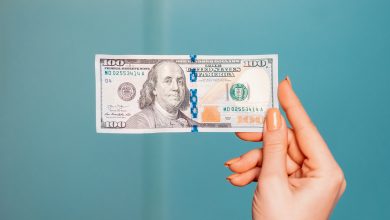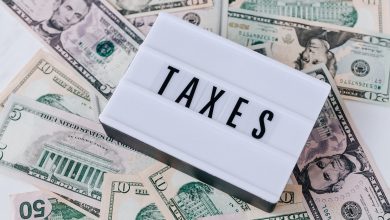How the China Deal Can Save You Hundreds of Dollars

American households saw their living expenses go up over the last two years. The ongoing US-China trade war is one of the main reasons. However, earlier this month, the two countries reached a partial agreement. The Trump Administration agreed to cancel levies on Chinese imports, including laptop computers and smartphone devices. Moreover, American farmers will sell to China soybeans and other agricultural products in larger quantities. More recently, Premier Xi Jin Ping decided to remove China’s oil tariff, which impacted US imports.
Since 2018, consumers started paying an additional $400 per year for everyday goods and items. If the US and China didn’t make a deal, the latest round of duties would’ve added another $150 to the increased household expenses. Equally as important, China’s oil tariff, which they imposed in September, contributed to higher fuel prices.
Nevertheless, this is all turning around. Heading into 2020, retail goods like clothing and shoes are going to get cheaper. The same applies to food and agricultural products. While the new trade agreement isn’t perfect, it certainly has a positive impact on your budget and the larger economy.
Retail Goods and Savings
The latest deal is important to households for two reasons. Firstly, the US reduced duties on Chinese imports that are worth $120 billion from 15% to 7.5%. Textiles, clothing, and shoes are amongst the affected products.
As a result, when retailers pay a lower fee for bringing these items into the country, the benefit is passed on to buyers in the form of lower prices.
In short, if you are thinking about purchasing new sportswear or running snickers, the next few months might be a great time to do so.
Meanwhile, the US planned on imposing another 25% tariff earlier this month. The round of levies would have impacted your budget even more than the previous ones, especially because it targeted consumer electronics and other items that households use on a daily basis.
However, thanks to the latest development, buyers can put this worry behind them. Generally speaking, after companies pay high duties on imports (whether it’s a finished product or not), they offset this expense by raising their prices. Lower tariffs have an opposite effect.
Made for China: Soybeans and Food
As part of the agreement, the Chinese government will start purchasing more agricultural goods from US farmers. During the course of this trade war, the China soybeans and agricultural tariff especially hurt American producers.
Before the conflict, on the other hand, American farmers only shipped $24 billion worth of products, annually, across the Pacific Ocean. Yet, between now and 2021, the US is going to send China soybeans, pork, and other food products for $40 billion per year.
How does this impact consumers? Just as with retailers, American farmers will raise their prices when they have to pay more tariffs. The only difference is that clothing and shoes are imported from China, while foods are exported there.
Apart from that, the same logic applies. First, farmers lost revenues when the Chinese government fined their products. After that, these sellers raised their prices (in both the US and China) to offset the cost.
Meanwhile, because the tariffs are now removed, farmers can regain their lost profits and bring their prices back to their pre-trade war levels. In fact, since China agreed to buy more American produce, you might start buying food at an even more discounted rate.
China’s Oil Tariff
In September, the Chinese government imposed duties on fuel that they purchased from the US. Beijing’s decision impacted gas station prices across all 50 states.
There are other factors that influence these costs, but the trade conflict is certainly one of them. To clarify, since the Communist Party recently scrapped China’s oil tariff, American producers will gain more access to the country’s markets.
Above all else, as refineries prepare to cut their expenses, your gas bill also goes down.
Having said that, this arrangement is only valid for one year. Next December, China’s oil tariff reduction will expire, unless the two countries extend the recent deal’s terms or reach a new agreement.
Are the Recent Cuts Enough?
In short, somewhat. Many analysts and pundits expected the arrangement to encompass more goods and products, especially since the tariffs on washing machines and other consumer items are still in place.
However, the partial trade deal accomplishes a lot. Not only does it enable households to save money at a noticeable rate, but it also paves the way to a more inclusive agreement.
Keep in mind that, during the last two years, negotiations fell apart on several occasions. Just a few months ago, when the US and China both imposed new levies on each other’s products, people didn’t expect the countries to resolve their problems until after the 2020 presidential election.
In fact, China’s oil tariff and their retaliation against American trade policies during the summer may have been the worst point in the conflict.
Meanwhile, the recent deal safeguards consumers from new duties that would’ve especially increased their cost of living. Perhaps most importantly, because American farmers will sell China soybeans and agricultural produce on favorable terms, more US households can purchase food at a cheaper price.
Progress or a Temporary Pause?
If we want to describe the trade war in one word, it would be ‘unpredictable’. The conflict between the two largest economies in the world created a lot of business uncertainty and stock market volatility.
An optimist may expect more trade-related progress in the future. A pessimist will predict additional conflicts.
However, the reality is that, whether or not the agreement puts us in a new direction, it certainly helps consumers in many ways. Prices, if at least temporarily, will go down.



